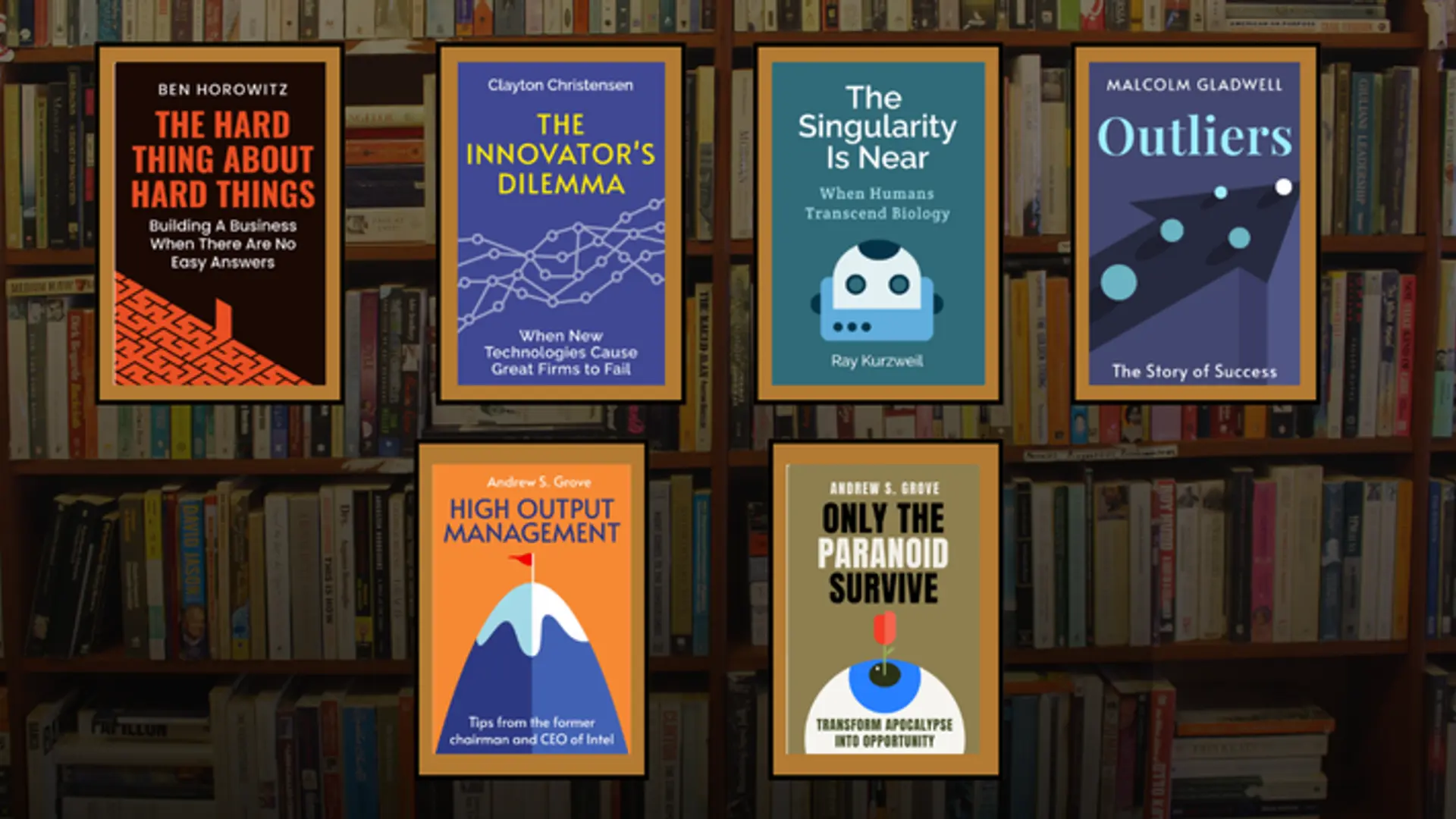[Techie Tuesday] Meet Rajesh Jain, India’s first website creator who sold his news business to Sify for $115M in the country’s first dotcom acquisition
In this week’s Techie Tuesday column, we bring you insights from Rajesh Jain whose extraordinary career spanning over three decades has taught him a great many lessons. Humble and opinionated, Rajesh’s story is first and foremost about accepting one's shortcomings.
Rajesh Jain holds the title for being India’s first website creator — a title no one else in the country can boast of, even though it was completely unintentional. At the time the internet was molding into the form we know and consume today,
Rajesh was in the US, having just completed his master’s from Columbia University. He tried to get several businesses in the domain of image processing and, later, multimedia databases, off the ground, but things didn’t go his way.
He decided to return to India. And as serendipity would have it, it was during this process that an idea — that would later be worth $115 million dollars — came to him.
"When I wanted to fly back to India, I'd find it very hard to get information on what’s going on back home… newspapers from India would basically take 10 days to come, India Today would take 10-15 days. Very little information was available," Rajesh recalls, in an interview with YourStory.
This was a problem endemic to most NRIs, he realised, and that led him to founding IndiaWorld, a news website that provided India-related content to NRIs.
“I thought if we could connect Indians globally, into a sort of information marketplace, what I call it electronic information marketplace, it would be really cool. So I came back and pivoted to that,” he says.

Young Rajesh showcasing IndiaWorld and its sister-websites on his computer
While it started with just news dissemination, IndiaWorld eventually grew to a subscription-based content portal, with separate websites on Indian cooking and recipes, live cricket scores, live stock quotes, etc. Rajesh says his wife and he launched 13 such dot-com websites back in 1994, with intentional, Indian names, such as samachar.com, or khel.com — which instantly became a hit worldwide.
The revenue model was built around a subscription fee — users had to pay to access the website.
Unfortunately, Rajesh had to face some bitter truths sooner than anticipated. His well-thought and maybe a little ahead-of-the-curve revenue model wasn’t working, largely because, as a tribe, Indians hate spending money.
“Someone told me that at a GE office in the US, IndiaWorld had only one subscriber, even though there were a lot of Indians. I realised then that what had happened was that one person had subscribed to the website, and shared the password with all Indian peers in the office,” Rajesh remarks.
He decided to abandon the subscription model, and instead started looking at revenue generation by helping big companies set up their own websites. It was something he’d planned to do when he was still setting up IndiaWorld, and Rajesh decided to revisit the plan after the GE incident.
The genius of Rajesh’s plan was that since these websites were developed by the same team that powered IndiaWorld, businesses found it convenient to use IndiaWorld’s platform to market their products. Also, companies that were creating products especially for the NRI population — such as Indian banks — also found a huge addressable audience on the website.
It was a win-win-win situation for Rajesh’s IndiaWorld, the companies whose websites he created, and the end-user.
A journey of self-exploration
Rajesh fell in love with technology and computers the way most kids of his age did — unexpectedly.
His father was a civil engineer, and Rajesh wanted to follow in his footsteps. The romantic notion of building big, strong buildings and bridges had a fever grip on him when he was growing up.
But then, his father bought a computer one day.
“Computers used to be these big, huge machines. They would almost like take up half a room and were quite expensive. But my father decided to buy one, even though he didn’t know how to use it…he just knew that computers were going to be big, one day,” Rajesh quips.

A college student at the time, Rajesh would often find himself tinkering with his father’s hardly-touched computer after classes, until one day, he decided to teach himself programming just so he could create some games to keep himself entertained. His mother joined him in his pursuit, and the duo started learning basic programming languages.
As these things often go, he decided to switch to computer engineering, but, as bad luck would have it, IIT Bombay placed him in electrical engineering, forcing Rajesh to wait four years during his graduation until he qualified for Columbia University’s master’s programme.
There, he decided to enrol for a course in an operating system, but his advisor suggested he drop it since he did not have a foundation in programming languages. Having finally bagged an opportunity that would let him pursue his true love, Rajesh decided to not let that deter him. He asked for some time and started teaching himself again, for a second time.
He ranked number two in the operating system course that semester.
“Sitting on a computer by yourself, and imagining what the mind can basically create…I sort of fell in love with programming,” he recalls.
The million-dollar decision
At IndiaWorld, where Rajesh had started creating websites for companies and conglomerates and turned a handsome profit, year after year, his next career-defining step came took shape after a loyal customer nudged him to look into something new.
When customers and users would visit the companies’ websites IndiaWorld had set up, they’d fill out online forms for various things — feedback, product inquiry, to evince purchase interest, etc. The problem was that there were no internal mailboxes back then. Microsoft Exchange was extremely expensive and inaccessible. So Rajesh and a small team started setting up LINUX-based mail servers for their clients, and charged them a fee for it.

Rajesh Jain and associates at an IndiaWorld event
The tech venture quickly became a hit in internal circles, and the three main product lines — IndiaWorld, the website; the website creation business; and the internal mailboxes and servers business turned into a milieu of their own, feeding off each other.
But it wasn’t a happy ever after for IndiaWorld.
When Rajesh tried to raise external funding from investors, he was told that he was "doing too many things" — the portal, the websites, and now, the email business. The latter two were apparently a "distraction", and something had to give.
“They put me on the defensive in most meetings early on for venture capital. So I decided to split the businesses. We separated out the internet business, which included the portal and the website building teams, and the mail server business, our tech venture,” he says.
The mail server business became Netcore Cloud — the company that Rajesh currently heads.
IndiaWorld was snapped up by Satyam Infoway — or Sify — which was looking to compete with Yahoo in India, especially on the content side.
Three weeks before the Sify deal, IndiaWorld was valued at around $40 million. It finally sold for $115 million — the biggest internet deal in India at the time.

Netcore Cloud today
Rajesh says Netcore Cloud has gone through multiple pivots since its inception.
For the first eight to nine years, it continued to lead the market in the mail server business, but did not see any substantial growth. An inventor and serial tinkerer, Rajesh had a lot of ideas that he tried to get off the ground — a blog search engine, for example.
“We became almost like a laboratory. People came up with interesting ideas, but we couldn’t monetise those ideas. Then, in 2006-07, it dawned on me that we were just not growing.”
After some soul-searching, he realised he, himself, was the problem.
“I’d come up with ideas but I was not able to take them to the market,” he says. To remedy that, Rajesh decided to hire a professional who could basically come and give discipline to all the ideas that Netcore Cloud was toying with.
As with most entrepreneurs, Rajesh admits it was hard to give up control and decision-making. When a founder is at an early stage, the company is basically just him or her — the vision and direction come from the founder, he says. But as the company grows, the founder has to take a step back and start delegating.
“Delegating gave me the freedom to start thinking and looking at the future, rather than to, say, remain trapped in the day-to-day execution of things. It wasn’t an easy decision, and it took me a long time to ask myself ‘look, do I need to get someone else in?’”
“Then, my worry was, what if I don’t get along with the person, especially if he was the CEO…if that person is very different from me…what’ll happen? Finally, the decision I made was that whatever I was currently doing was not good for the company — and I needed to put the company first,” he says.
Consequently, Rajesh hired Netcore’s first CEO, and that, he says, was a great decision.
“Our first CEO, Abhijit Saxena was very, very different from me. He was sales-oriented, and we started doing sales meetings. Earlier, our sales meetings were if I caught someone in the corridor and asked them ‘hey, how are things going?’. And if they would say, ‘this is all I’ve got’, I’d say ‘Okay, that’s the best you could have done, and I’m fine with that’. But Abhijit instituted a weekly sales review and OKRs, and we started seeing upticks,” he recalls.

A 1999 cutout of IndiaWorld-Sify deal in the Financial Express
After email servers, Netcore decided to do SMS marketing, but had to shut the operation down after TRAI raised rates. The silver lining was that the team learned a lot about marketing during the time, and was easily able to pivot to email marketing, which was free. Also, having set up email servers for hundreds of businesses, the company already had a directory of email IDs that it could send out emails to. So, it started focusing its efforts there.
In 2014-15, it broke into the marketing tech space, adding an automation stack and automating marketing campaigns. Since then, the company has done two acquisitions to bolster its mar-tech product, added AI/ML to its service stack, and expanded to Southeast Asia, the Middle East, Africa, the US, and Europe.
Its clients include the likes of Jet, GE Money, Vodafone, StanChart, Pfizer, McDonald’s, Airtel, Flipkart, Swiggy, Sendo, and more.
Disagree and commit
As a single founder of a legacy business that was started back when "starting up" was not as glamorous as it is today, Rajesh disagrees with investors and VCs who today say it is important for there to be more than one founder, “in case something happens to one founder”.
In fact, as a former startup mentor and investor himself, Rajesh says he never cared about the number of founders — only their vision and what they were building. His opinion is that every enterprise should have a single brain, and that a business should not be run like a democracy.
"The startup has to have one authoritarian leader at the top because someone’s got to make those decisions. You can’t do voting on every decision; there has to be one person."
He reasons that the founder species is very different, very instinctive, and only the founder knows the vision inside his head. No amount of money or VC interference should try to change or modify that vision — which is also why Rajesh says he stopped mentoring and investing.

In his own venture, Rajesh recalls that whenever he would disagree with his COO or CEO, he would voice his concerns only privately, never in public.
“A very good friend of mine coined the phrase ‘disagree and commit’. He said that in a company, you may not agree all the time with the decisions being made. So you don’t stay silent, you voice your opinion. But once the decision is made, you disagree but you commit to following that decision. You don’t sit around and grouch, or become disgruntled; you disagree and commit.”
Coming back to the question of VCs asking single founders to look for a co-founder, Rajesh says, in his experience, it usually means that the investor thinks the founder is missing some skills that would be helpful to have in the business.
Two ways to solve that are either upskilling and acquiring those missing skills, or hiring someone who has the skill set, Rajesh says.
“The thing is that, whatever happens, the person at the top is really what the VC has to be betting on. And I think generally, founders do tend to have pretty good instinct,” he adds.
His sage advice for founders, and everyone else, is to pencil in some “me time” every day, especially in a world where our lives are ruled by email inboxes and Google calendars.
“Whether it’s early morning or late at night, every person needs to create this time for deep breathing, deep thinking, whatever…where your hand is not going to the mobile phone to check every few minutes. You have the power of technology today and that’s always going to be there…there is no way of stopping any of these things. AI, etc. is going to become more and more powerful. But it’s up to us as individuals to look at how to use it, how to apply it in our personal lives,” Rajesh says.
Edited by Teja Lele


![[Techie Tuesday] Meet Rajesh Jain, India’s first website creator who sold his news business to Sify for $115M in the country’s first dotcom acquisition](https://images.yourstory.com/cs/2/f49f80307d7911eaa66f3b309d9a28f5/Featureimages-newdeck11-1641210992600.png?mode=crop&crop=faces&ar=2%3A1&format=auto&w=1920&q=75)
![[Techie Tuesday] Tracing computer engineer Siva Kumar Tangudu’s life from the groves and labs of Goa to CTO of fintech startup Slice](https://images.yourstory.com/cs/2/f49f80307d7911eaa66f3b309d9a28f5/Slice-1633355789306.png?fm=png&auto=format&h=100&w=100&crop=entropy&fit=crop)

![[Year in Review 2021] These top 25 startup stories are sure to encourage and enthuse you](https://images.yourstory.com/cs/2/a054f1302d6c11e9aa979329348d4c3e/Cover-05-1640313964424.png?fm=png&auto=format&h=100&w=100&crop=entropy&fit=crop)




